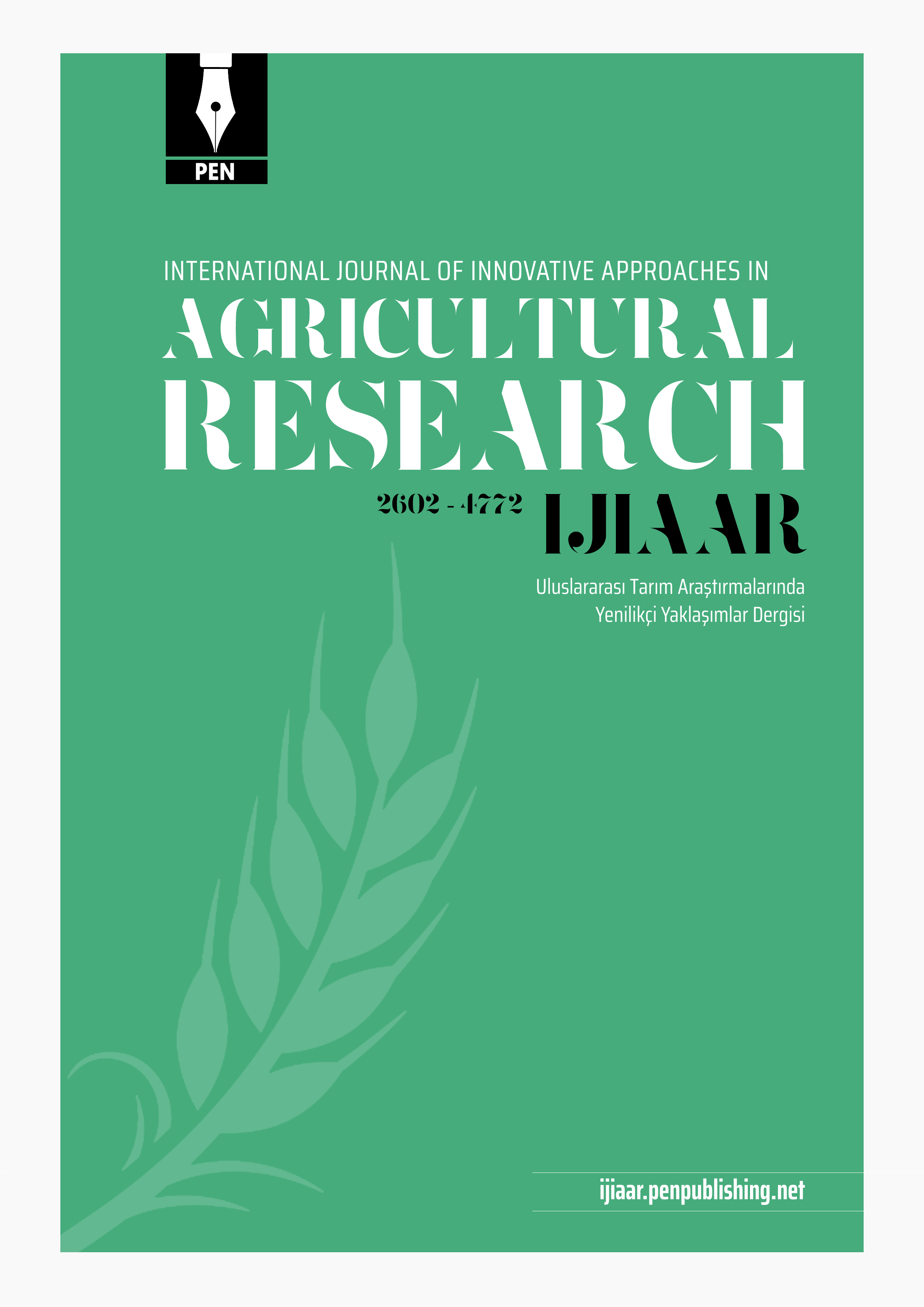
Uluslararası Tarım Araştırmalarında Yenilikçi Yaklaşımlar Dergisi
Yazarlar: Emad Al, Maaroof , Nermin M. Saber
Konular:-
DOI:10.29329/ijiaar.2019.194.9
Anahtar Kelimeler:Cucumis sativus,Biological control,Fungal diseases,Iraq
Özet: Occurrence and cucumber damping-off disease incidence was determined in Sulaimani plastic houses in 2014 revealed from overall disease incidence of 6.82%. The highest incidence and severity reached to 23.7% and 5.0 respectively in Kharajian. While the lowest incidence and severity was detected in Arabit (0.2% and 0.6 respectively). Disease symptoms include pre and post-emergency damping-off of cucumber seedlings. Twelve fungal pathogens were isolated from roots and crown of infected seedlings and plants that explore typical damping-off and root rot symptoms. Rhizoctonia solani was the most frequently isolated fungi followed by Pythium aphanidermatum, Fusarium solani and Pythium sp. Morphology and characteristics of R. solani and P. aphanidermatum match with the original described characters of the fungi. The optimum growth temperature for P. aphanidermatum was 30°C and for R. solani was between 25-30°C. Pathogenicity test revealed that R. solani significantly surpassed all other treatment except P. aphanidermatum by inciting 53.3% pre and 66.4% post-emergency damping-off followed by P. aphanidermatum that incited 43.6% and 56.3% pre and post emergency damping-off respectively. T. harzianum showed high antagonistic ability against both pathogens. Antagonistic ability degree of T. harzianum reached to 37.02 against P. aphanidermatum and 32.00 against R. solani. The bio-control bacterial Bacillus subtilis, Rhizobacteria, Streptomyces coelicolor showed high efficiency in controlling the disease. Rhizobacteria and S. coelicolor completely inhibit R. solani growth at 10-1 bacteria dilution and significantly surpassed all other treatments. dilution 10-1 from all the used bacteria were significantly more efficient against P. aphanidermatum. This dilution was contain 21.4 × 107 cell forming unit in each milliliter (CFU/ml) in B. subtilis, 28 × 107(CFU/ml) in Rhizobacteria, 29.5 × 107 (CFU/ml) in S. coelicolor, 32.2× 107(CFU/ml) in Pseudomonas flouresence and 22.6 × 107 (CFU/ml) in Azotobacter chroococcus.